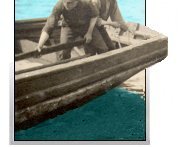 |
 |

|
Fishermen's Union Trading Company Coaker recognized that one of the most effective ways to redress the imbalance in the merchant-fisher relationship was for the Union to intervene in the fish business. In 1910 the Union decided to establish "cash stores" for any branch council with over 200 members. By 1911 there were five cash stores, buying fish and selling goods at cash prices. Later that year the Union incorporated the Union Trading Company to engage in all aspects of the fish business. With shares limited to Union members, the company was designed to be the commercial arm of the Union, providing goods at lower prices and buying fish at high prices, and, in the process, forcing merchants to be more competitive. Its purpose was to free fishermen from the bonds of merchant credit; they would have to deal only with the Union company, or be treated more fairly by traditional merchants. In Coaker's words, the Company was to make every fisherman, "his own importer, retailer, fish buyer and exporter." (Coaker: 1920, p. 83)
The Company quickly established itself in areas of Union support. By 1913 there were 31 stores in outport communities (see map), primarily along the northeast coast. The number dipped to 20 during World War I due, as Coaker put it, "to the conditions created by the war, which affected demand for goods ..." (Coaker: 1920, p. 82) However, the Company's fortunes improved; by 1919 it had 4,421 shareholders and, with 40 stores in the outports, an annual trade volume in excess of $3,000,000. Coaker's exceptional business and organizational skills were critical to the success of the Company and the Union. Fishermen had achieved a measure of independence under the FPU and UTC beyond the realm of their imaginations just a few years prior. This in turn strengthened the Company's position. It was built on trust; trust of the Union members in their leader and their trust of each other. This enticed them to become both shareholders and loyal customers, essential ingredients for the Company to survive. There were darker clouds on the horizon but, up to the end of the War and beyond, Coaker, the FPU and its related enterprises, were an influential force on the Newfoundland social, economic and political landscape. Port Union: The Union's Commercial Headquarters Part of the Company's success may also have been due to the decision to move its headquarters out of St. John's. Coaker had intended to establish outport commercial headquarters for the Union as early as 1912; three years later the FPU purchased a large tract of land on the southwest side of Catalina harbour in Trinity Bay. The establishment of Port Union in that location - a town unto itself - seemed to fortify Coaker and the Union enterprises. Port Union was unique: a purpose-built union town housing all union companies, along with their workers. Construction commenced in May, 1916 and, two years later, the UTC moved its headquarters to Port Union. The town consisted of a saltfish processing store, a department store, a seal oil plant, a machine shop, a forge, a coal and salt storage shed, a woodworking plant and a shipyard. There were also 50 houses for Union employees, a hotel, a bakery and a movie theatre. A large public meeting hall, known as Congress Hall, was built in 1924 on a hill overlooking Port Union. The first floor of the building was used for all manner of public functions while the second was reserved for Union conventions and other business. The Anglican Church of the Holy Martyrs, built in 1923, commemorates the Coaker recruits who were killed during World War I. In 1919 there were 400 people living and working at Port Union.
The UTC head office was located on the third floor of the general store with Coaker's office in the northwest corner. From there he could observe the harbour and all of the work being carried around the waterfront by the various Union enterprises. Among them were the Union Export Company, the Union Shipbuilding Company, the Union Electric Light and Power Company, the Union Cold Storage Company and the Union Publishing Company. The Trading Company supplied goods to fishers around the Colony and purchased their fish, which was then exported by the Export Company, often in vessels constructed for the purpose by the Shipbuilding Company. The Fishermen's Advocate, founded and edited by Coaker in 1910, and relocated to Port Union in 1924, was the Union's chief mechanism for communicating with the Union; part of the glue that held the organization together. It disseminated the Union's political message and provided intelligence about the fishery. This integrated approach to the Union's commercial activity was a clever strategy; the Union and its members could not be ignored. |
|||||||||||||||||||||||||||||||||||||||||||||||||||||||||||||||||
© 2003 - 2012 Maritime History Archive, Memorial University |